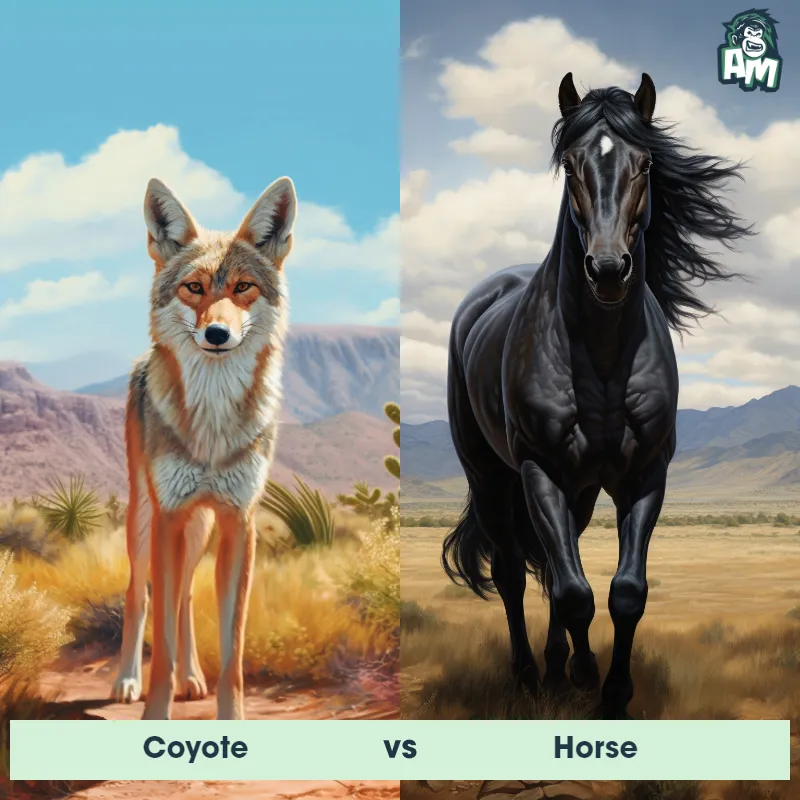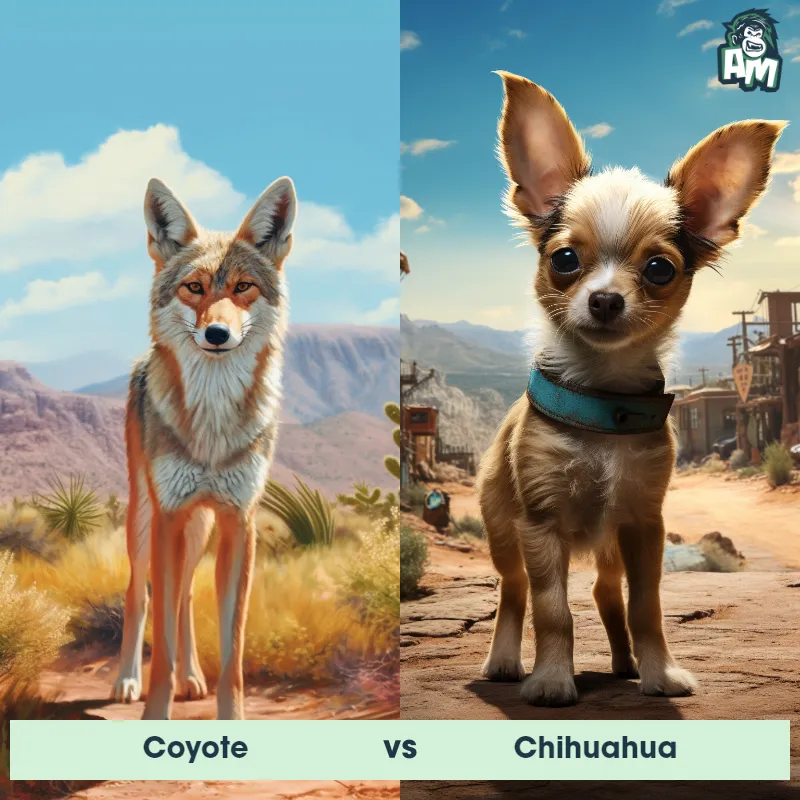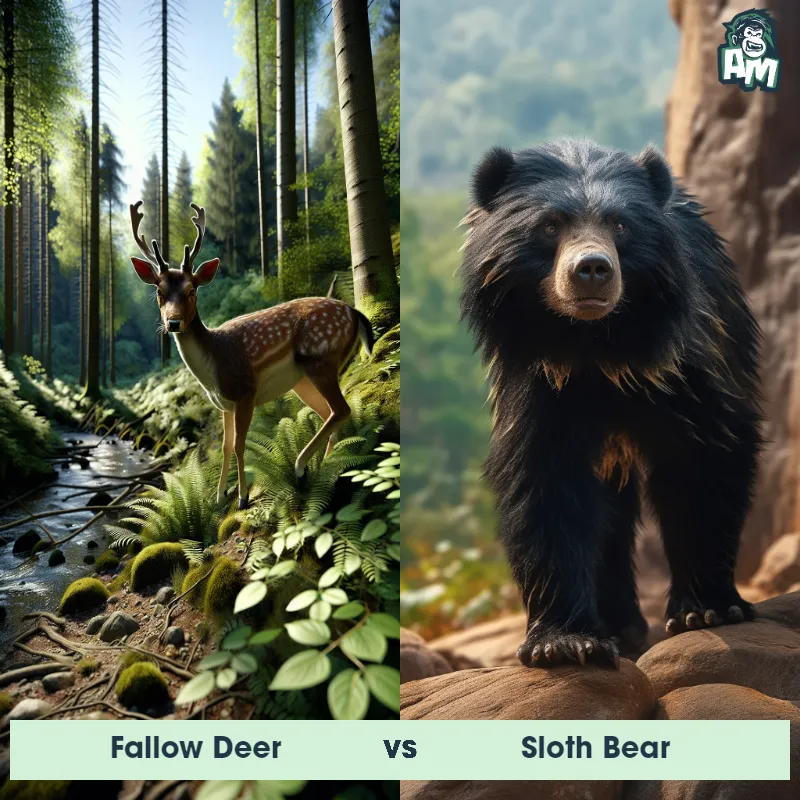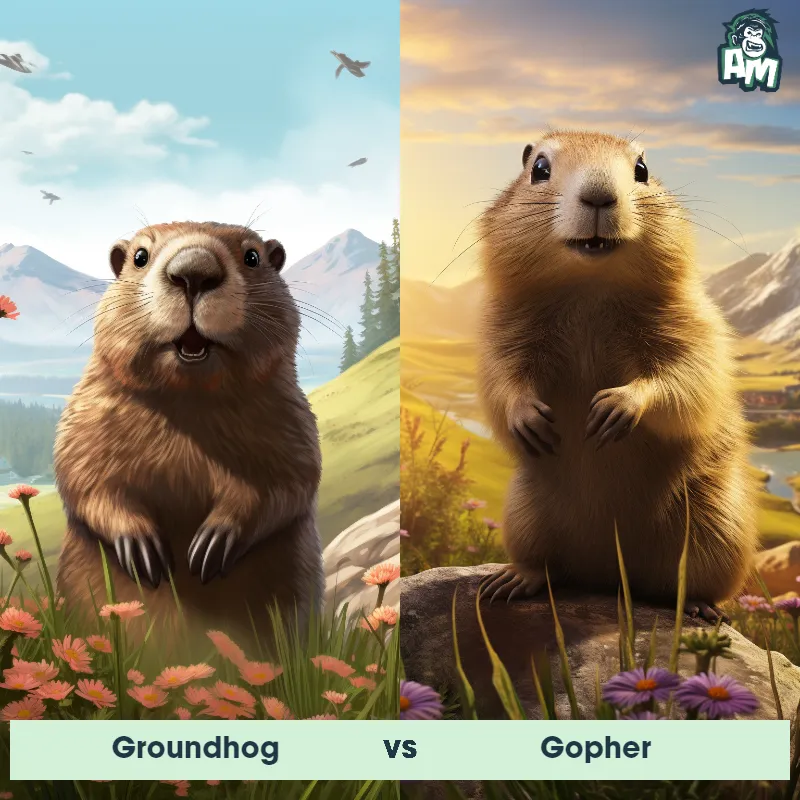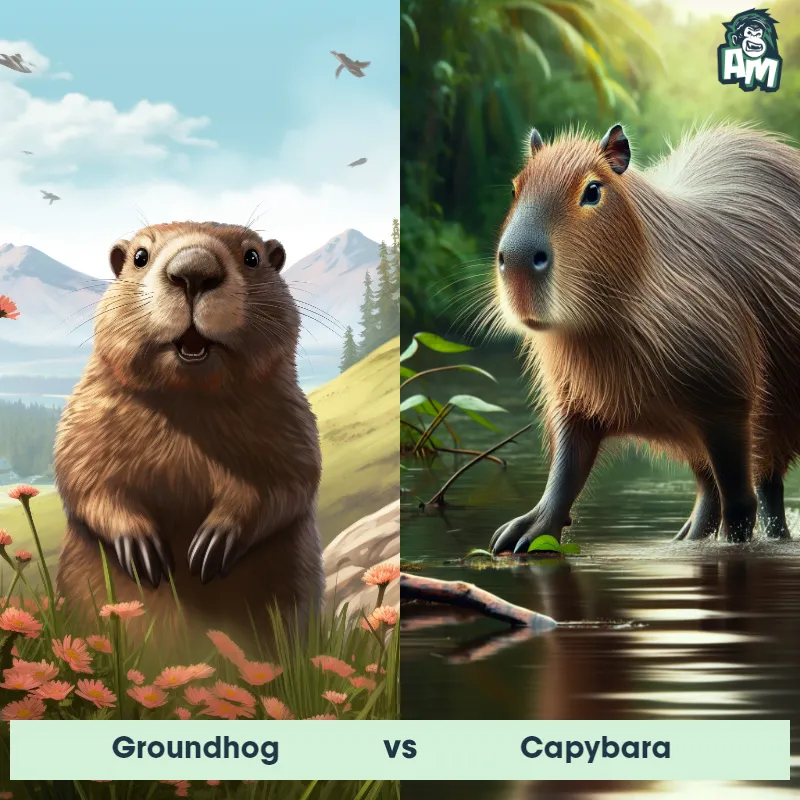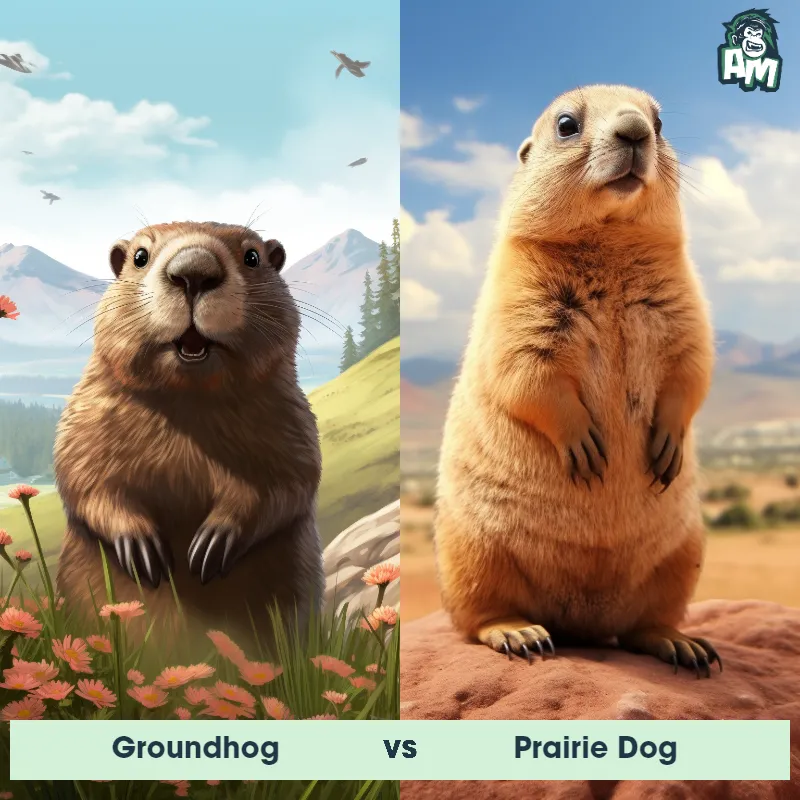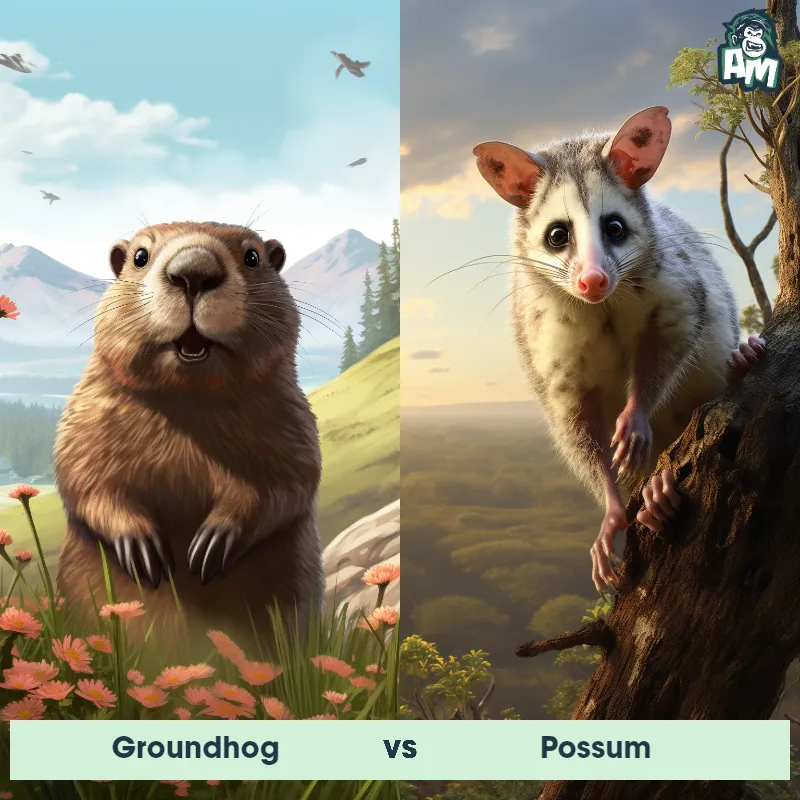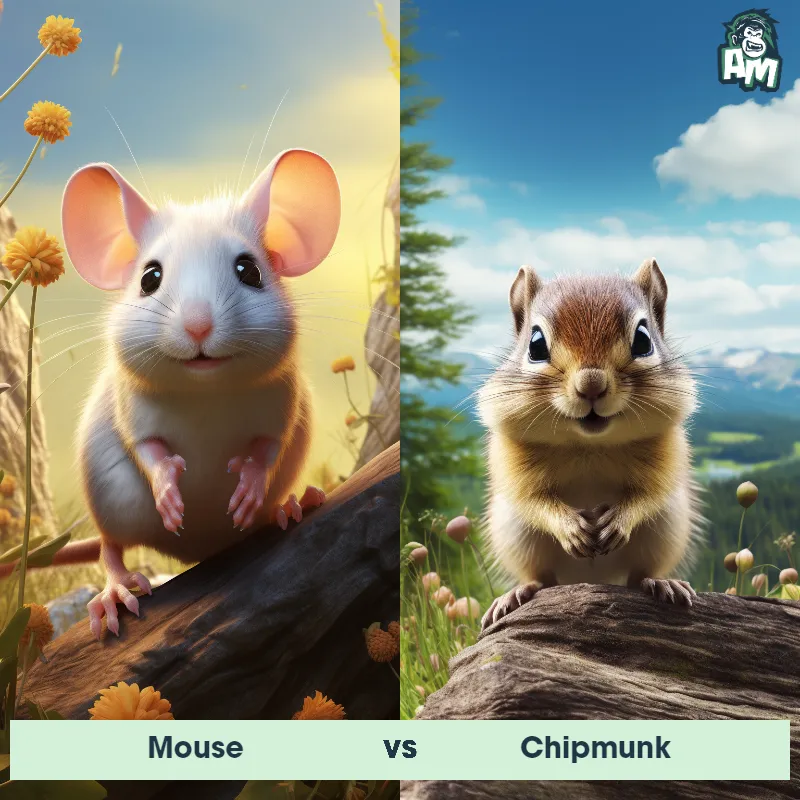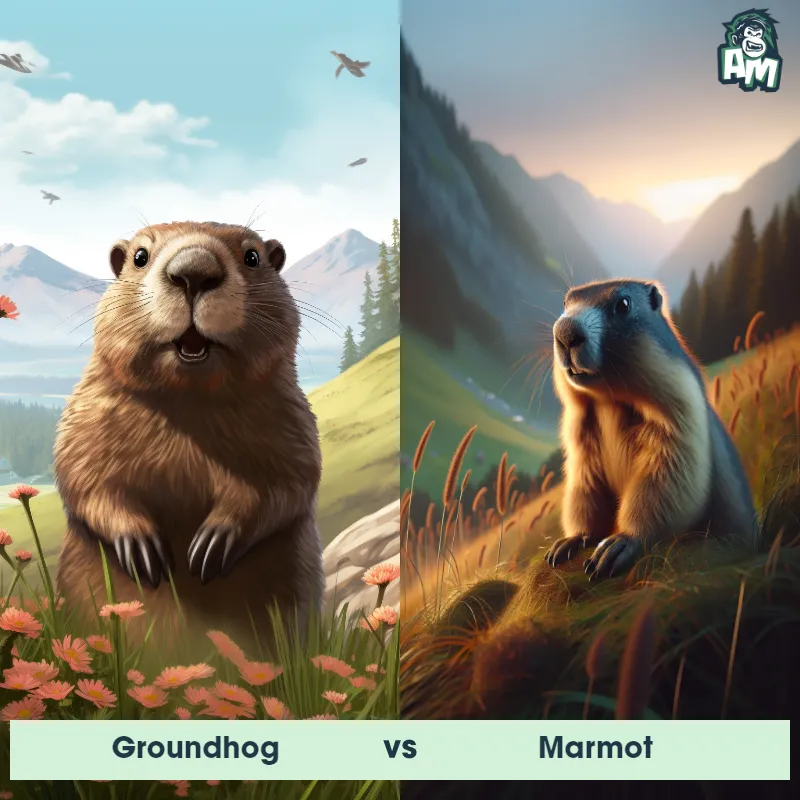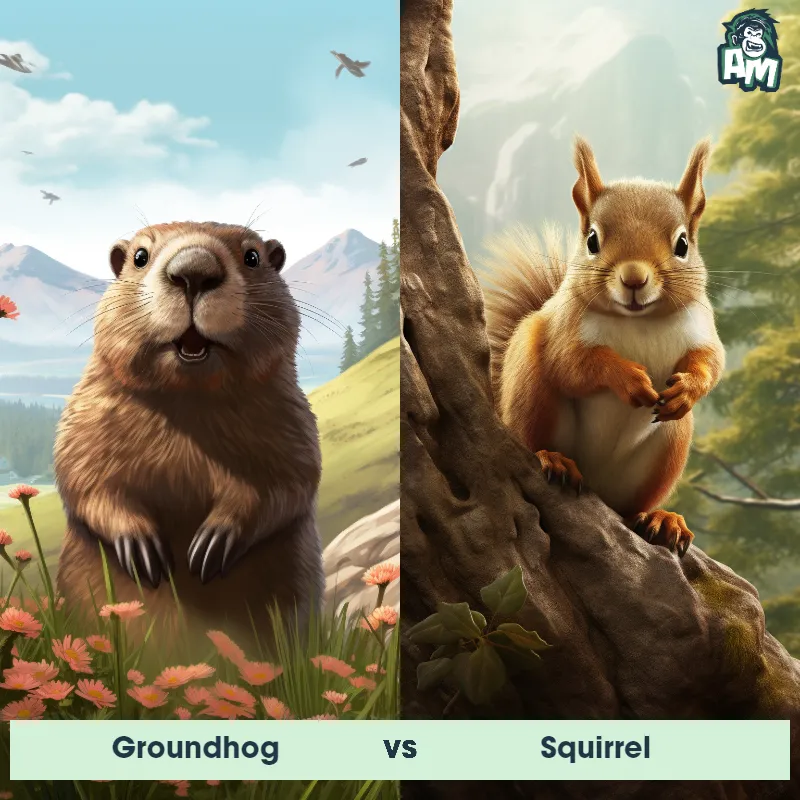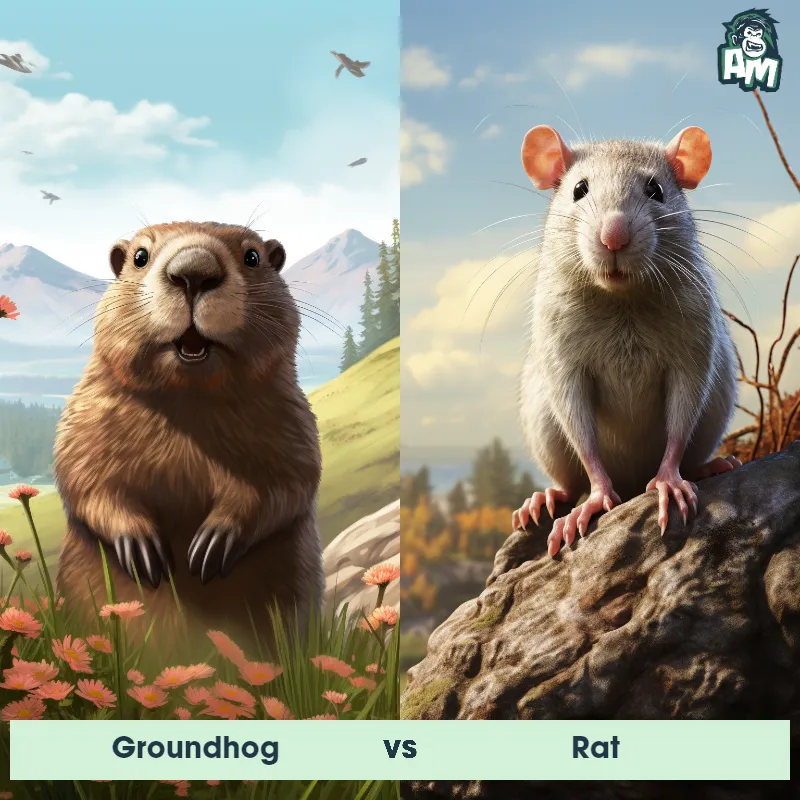Groundhog vs ChipmunkSee Who Wins

Ladies and gentlemen, boys and girls, and every beloved spectator tuning in from afar, we have an unparalleled showdown tonight! An adrenalized duel, a peculiar but thrilling clash straight from the animal kingdom's very own titans – a robust Groundhog facing off against a nimble Chipmunk! This promises to be a riveting display of nature’s strategy and survival tactics. Welcome, each and every one of you to this unforgettable spectacle!
Contender 1: Groundhog
The Groundhog, also known as a woodchuck, is a rodent of substantial size known for its burrowing habits. Groundhogs possess a stout body, weighing up to 14 pounds and measuring up to 26 inches long. They have a grizzled, grayish-brown fur, short ears, a small tail, and sharp claws which are well-adapted for digging. The Groundhog's diet primarily consists of grasses, fruits, and vegetables, and they are often found in meadows, pastures, and along the edges of woodlands.
Fun Fact: Groundhogs are not only skilled diggers but also efficient swimmers and climbers, surprising traits for their seemingly clumsy build.
Contender 2: Chipmunk
Chipmunks are small, striped rodents known for their adorable appearance and cheek pouches used for storing food. Part of the squirrel family, they possess brown fur with dark and light stripes running down their backs and sides. They are very agile and fast, able to climb trees and walls with ease. Chipmunks are primarily ground dwellers and live in burrows, which are complex networks of tunnels and chambers.
Fun Fact: During the fall, chipmunks begin to gather food in their cheek pouches and bring it back to their burrows, creating a food cache that can help them survive through winter when they enter a state of torpor, similar to hibernation.
Matchup Stats
| Groundhog | Chipmunk | |
|---|---|---|
| Size | Up to 26 inches long (66 cm) | 4-7 inches (10-18 cm) |
| Weight | Up to 14 pounds (6.35 kg) | 1-5 ounces (28-142 grams) |
| Speed | 12 mph (19 km/h) | 21mph (34km/h) |
| Key Strength | Sharp claws for digging and defense | Agility and Speed |
| Biggest Weakness | Stout body, not built for speed | Small Size |
Current Votes
Groundhog vs Chipmunk
See Who Wins
View More Matches
Looking For More?
Similar Matches
Scientific Stats
| Groundhog | Chipmunk | |
|---|---|---|
| Scientific Name | Marmota monax | Tamias |
| Family | Sciuridae | Sciuridae |
| Habitat | Meadows, pastures, and edges of woodlands | Forests, Woodlands, Gardens, Parks |
| Geography | North America | North America, Asia |
| Diet | Grasses, fruits, and vegetables | Omnivorous (Nuts, Seeds, Fruits, Insects, Bird Eggs) |
| Lifespan | 3 years - 6 years | 2 years - 8 years |
Key Differences between Groundhog and Chipmunk
- Tail characteristics: Groundhogs possess a short, bushy tail that is usually held horizontally, while chipmunks have a long, fluffy tail with alternating black and white stripes that they often hold upright.
- Body shape: Groundhogs have a robust and stocky body with a short, bushy tail, while chipmunks have a slender and elongated body with a long, fluffy tail.
- Facial features: Groundhogs have a large, round head with small ears and a broad, flat face, whereas chipmunks have a smaller and more triangular-shaped head with larger, rounder eyes and prominent, rounded ears.
- Size: Groundhogs are significantly larger than chipmunks, with an average length of 16-26 inches (40-66 cm) and a weight of 4-9 pounds (1.8-4 kg), whereas chipmunks measure around 5-6 inches (13-15 cm) in length and weigh only 1-3 ounces (28-85 grams).
- Habitat preference: Groundhogs are primarily burrowers, constructing complex underground burrows with multiple entrances in open areas such as fields, meadows, or the edges of forests. In contrast, chipmunks are arboreal, preferring to live in wooded areas and utilizing tree cavities or constructing burrows beneath tree roots or rocks.
- Coloration: Groundhogs have coarse fur that varies from brown to reddish-brown, with a lighter underside, while chipmunks have a striped pattern on their back consisting of alternating brown and black stripes, with a white or light brown underside.





